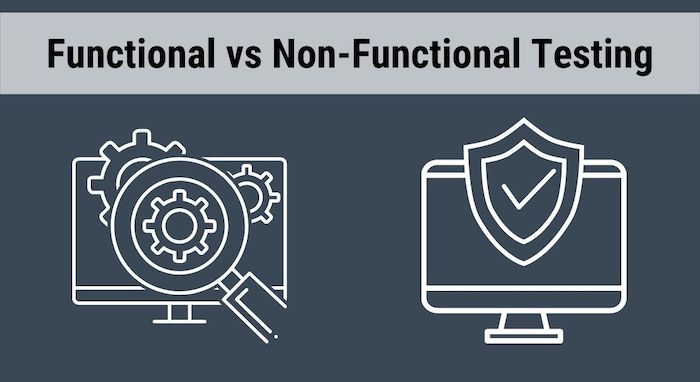In This article
The main target of a software tester is to improve the software quality to the highest level possible. To accomplish this desired goal, the software testing process must contain a large variety of testing types. The different testing types performed during the Software Development Life Cycle (SDLC) aimed to validate proper functional aspects and non-functional aspects alike. Functional and non-functional testing is completely different, but executing both is necessary for the final product’s success. This article will cover background information, advantages, and differences between Functional vs Non-Functional testing.

What is Functional Testing?
Functional testing is an umbrella term for many test types that are intended to check the whole functionality of the software. Functional testing verifies that the software is working as it should and is also free of bugs. In order to confirm that, the tester simulates an end-user real-life scenario and compares the test results with the anticipated results from the requirements document. Functional testing can be executed manually or automated.
For the most part, functional testing focuses on the external behavior of the software, so there is no need for internal source code knowledge, and is mostly considered black-box testing. This testing type is performed before non-functional testing. There are multiple types of functional testing such as smoke testing, sanity testing, regression testing, and so on. An example of functional testing can be pressing the login button with incorrect input.
Advantages of Functional Testing
- Ensure the software functions as it should
- Allow keeping the software clean from bugs
- Help to meet business and user requirements
- Done from a real-life end-user perspective
What is Non-Functional Testing?
This is a broad term that contains all of the aspects that aren’t related to the system’s functionality. Among the aspects considered non-functional are performance, security, usability, and more. The main goal of non-functional testing is to answer customer needs and make the product user-friendly. Non-functional tests focus on response time, system robustness, security issues, and so forth.
Non-functional testing is executed as automated testing using various automation tools, depending on the test type. Testing types that are categorized as non-functional testing are load testing, stress testing, accessibility testing, etc. To test how the software is behaving under an extreme workload volume is a decent non-functional test example.
Advantages of Non-Functional Testing
- Improve the performance of the software
- Ensure high-security levels
- Make the software more user-friendly
- Help the software meet customer needs
Comparison between Functional and Non-functional Testing
| Category | Functional Testing | Non-Functional Testing |
|---|---|---|
| Definition | An umbrella term for various testing types that test the functionality of a software | A board term for multiple test types that check non-functional aspects of software |
| Purpose | Verify the software functions faultlessly based on the business and user requirements | To ensure and improve high levels of security, performance, usability, etc |
| Manual or Automation | Can be manual or automation testing | Automation testing |
| When to perform | Before non-functional testing | After functional testing |
| Testing types example | Smoke testing, Sanity testing, Regression testing | Load testing, Stress testing, Accessibility testing |
| Advantages |
|
|
Summary
In conclusion, enhancing the software’s quality includes executing large amounts of testing types. The test types are divided into functional testing and non-functional testing. On one hand, functional testing aims to ensure the software is functioning as it should and meets the business requirements. Several testing types are considered functional testing like smoke testing, sanity testing, regression testing, and more. On the other hand, non-functional testing objectives are to examine numerous elements such as performance, security, usability, and more. Among the non-functional testing types load testing and stress testing can be named.
Regardless of the testing type you execute, functional testing or non-functional, using a test management platform could greatly help manage your testing process more effectively. PractiTest is your go-to solution for controlling and achieving better results. With PractiTest, you can gain full test coverage and increase team productivity.
























